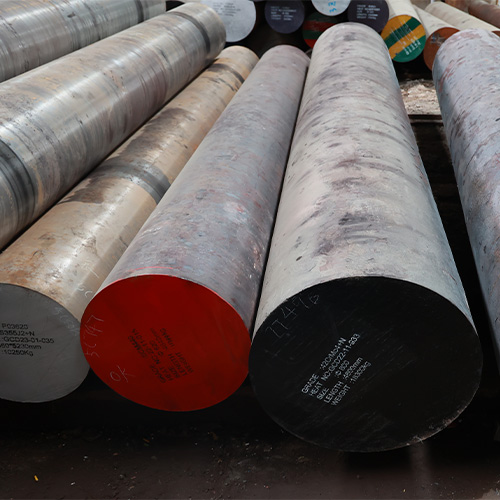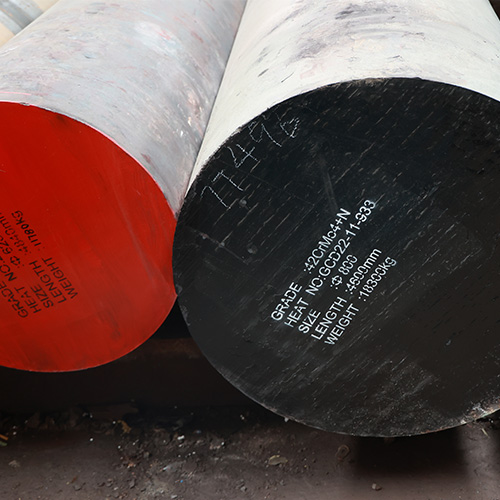Introduction

4140 alloy steel is a versatile, high-performance steel alloy renowned for its exceptional combination of strength, toughness, and wear resistance. It is a low-alloy steel that contains specific amounts of chromium, molybdenum, and manganese, which contribute significantly to its superior mechanical properties. This strategic alloying composition makes 4140 steel a preferred choice for a wide range of demanding applications across various industries, including automotive, aerospace, oil and gas, and military.
This comprehensive guide will delve into the intricacies of 4140 alloy steel, exploring its composition, properties, heat treatment processes, applications, advantages, and disadvantages. By the end of this article, you will have a deep understanding of why 4140 steel is a go-to material for engineers and manufacturers worldwide.
Understanding the Composition and Properties of 4140 Steel
The specific composition of 4140 steel is carefully balanced to achieve its remarkable properties. The key elements and their contributions to the overall performance of the steel are as follows:
- Carbon: This essential element plays a crucial role in determining the strength and hardenability of the steel. A higher carbon content leads to increased hardness and strength but can also reduce ductility and toughness.
- Manganese: Manganese enhances the steel’s toughness, wear resistance, and hardenability. It also aids in improving the steel’s machinability and weldability.
- Silicon: Silicon contributes to the steel’s strength and magnetic properties. It also helps to improve the steel’s resistance to oxidation and scaling at high temperatures.
- Chromium: Chromium is a vital alloying element that significantly increases the steel’s hardenability, corrosion resistance, and wear resistance. It forms hard chromium carbides, which contribute to the steel’s excellent mechanical properties.
- Molybdenum: Molybdenum is a powerful alloying element that improves the steel’s toughness, strength, and creep resistance at elevated temperatures. It also enhances the steel’s resistance to tempering, allowing it to retain its hardness and strength even at higher temperatures.
The synergistic effect of these elements results in 4140 steel possessing a unique combination of properties, including:
- High tensile strength: This property enables the steel to withstand high loads without yielding or fracturing.
- Excellent fatigue strength: 4140 steel exhibits exceptional resistance to cyclic loading, making it suitable for applications involving repeated stress cycles.
- Good wear resistance: The presence of hard chromium carbides and the appropriate heat treatment processes contribute to the steel’s excellent wear resistance, allowing it to withstand abrasive wear and frictional forces.
- High impact strength: 4140 steel possesses high impact toughness, enabling it to absorb sudden shocks and impacts without fracturing.
- Good machinability and weldability: The steel’s machinability and weldability are enhanced by the presence of certain alloying elements and appropriate heat treatment processes.
- High hardenability: 4140 steel can be hardened to a high degree, allowing it to achieve excellent mechanical properties through heat treatment processes.
Heat Treatment of 4140 Steel
Heat treatment is a critical process that significantly influences the properties of 4140 steel. By carefully controlling the heating and cooling rates, the microstructure and properties of the steel can be tailored to specific applications.
- Annealing: Annealing involves heating the steel to a specific temperature, holding it at that temperature for a certain period, and then slowly cooling it in a furnace. This process softens the steel, making it more ductile and easier to machine.
- Normalizing: Normalizing involves heating the steel to a higher temperature than annealing and then air cooling it. This process refines the grain structure of the steel, improving its toughness and machinability.
- Quenching and Tempering: Quenching and tempering is a two-step process that involves heating the steel to a specific temperature, quenching it rapidly in a cooling medium (such as water or oil), and then tempering it at a lower temperature. Quenching rapidly cools the steel, trapping carbon in solution and forming martensite, a hard and brittle phase. Tempering, on the other hand, involves reheating the quenched steel to a lower temperature, allowing some of the martensite to transform into a more ductile phase, such as tempered martensite or bainite. This process increases the toughness and ductility of the steel while maintaining its hardness.
The specific heat treatment process chosen depends on the desired properties of the final product. For example, if high strength and wear resistance are required, a more aggressive quenching and tempering process may be used. If higher toughness and ductility are needed, a milder heat treatment process may be employed.
Applications of 4140 Alloy Steel
The exceptional combination of properties possessed by 4140 steel makes it a versatile material with a wide range of applications across various industries. Some of the most common applications of 4140 steel include:
- Automotive Industry:
- Crankshafts
- Gears
- Axles
- Connecting rods
- Suspension components
- Steering components
- Aerospace Industry:
- Landing gear components
- Fasteners
- Structural components
- Engine components
- Oil and Gas Industry:
- Drilling tools
- Pump shafts
- Valve components
- Pipeline fittings
- Military Applications:
- Firearms components
- Armor plating
- Ordnance components
- General Engineering:
- Shafts
- Gears
- Machine components
- Tooling and dies
Advantages of Using 4140 Alloy Steel
- Versatility: 4140 steel is a highly versatile material suitable for a wide range of applications due to its excellent combination of properties.
- High Strength-to-Weight Ratio: 4140 steel offers an excellent strength-to-weight ratio, making it ideal for applications where weight reduction is critical.
- Good Machinability and Weldability: The steel’s machinability and weldability are enhanced by the presence of certain alloying elements and appropriate heat treatment processes.
- Excellent Fatigue Resistance: 4140 steel exhibits exceptional resistance to cyclic loading, making it suitable for applications involving repeated stress cycles.
- High Hardenability: 4140 steel can be hardened to a high degree, allowing it to achieve excellent mechanical properties through heat treatment processes.
Disadvantages of Using 4140 Alloy Steel

- Cost: 4140 steel is generally more expensive than carbon steels due to its alloying elements and specialized heat treatment processes.
- Susceptibility to Stress Corrosion Cracking: In certain environments, 4140 steel may be susceptible to stress corrosion cracking, a form of corrosion that occurs when a metal is subjected to tensile stress in a corrosive environment.
Conclusion
4140 alloy steel is a high-performance material that offers an exceptional combination of strength, toughness, wear resistance, and machinability. Its versatility, high strength-to-weight ratio, and excellent fatigue resistance make it a popular choice for engineers and manufacturers in various industries. By understanding the properties, heat treatment processes, and applications of 4140 steel, you can make informed decisions about its use in your specific application.
FAQ
Q: What is 4140 alloy steel?
A: 4140 alloy steel is a versatile, high-performance steel known for its excellent combination of strength, toughness, and wear resistance. It’s commonly used in various industries, including automotive, aerospace, and oil and gas.
Q: What are the key alloying elements in 4140 alloy steel?
A: The key alloying elements in 4140 alloy steel are chromium, molybdenum, and manganese. These elements contribute to the steel’s high strength, toughness, and wear resistance.
Q: What are the common heat treatments for 4140 alloy steel?
A: Common heat treatments for 4140 alloy steel include annealing, normalizing, and quenching and tempering. These processes are used to achieve specific mechanical properties, such as hardness, toughness, and ductility.
Q: What are some common applications of 4140 alloy steel?
A: 4140 alloy steel is used in a wide range of applications, including crankshafts, gears, axles, connecting rods, landing gear components, fasteners, drilling tools, and firearms components.
Q: What are the advantages of using 4140 alloy steel?
A: The advantages of using 4140 alloy steel include high strength, good toughness, excellent wear resistance, good machinability, and good weldability.
